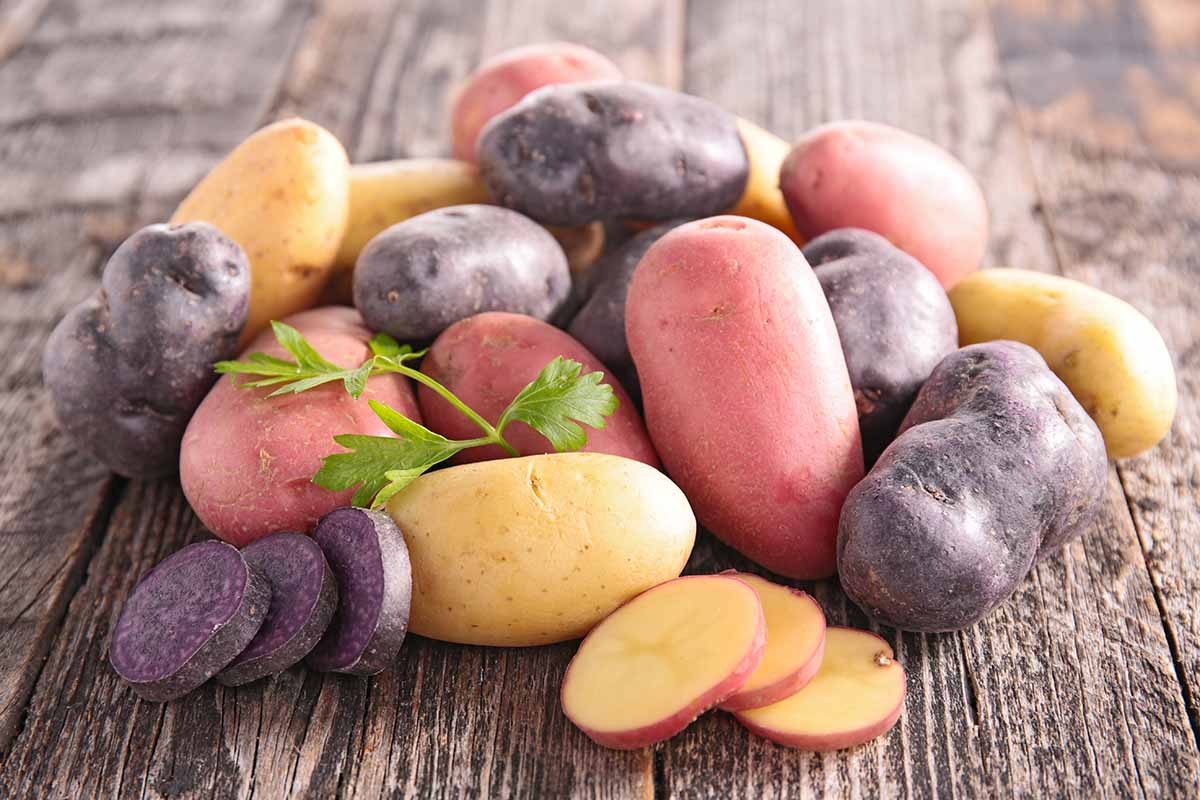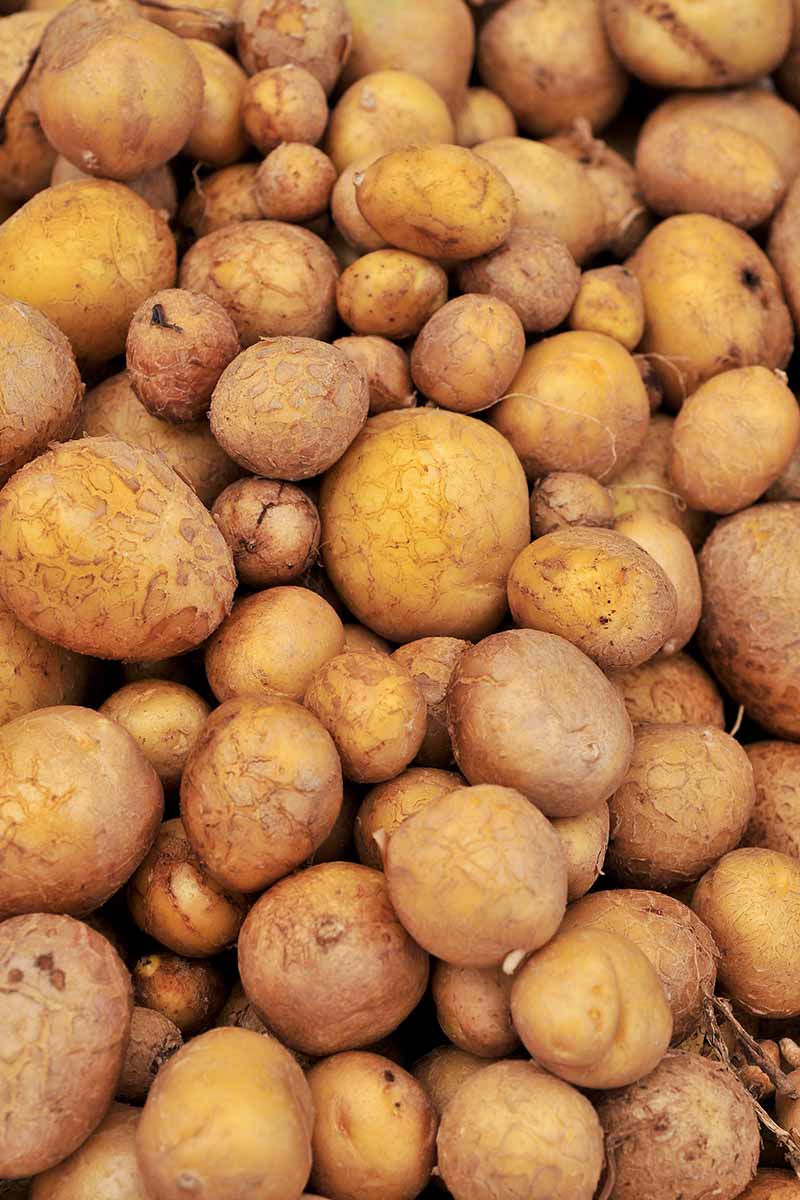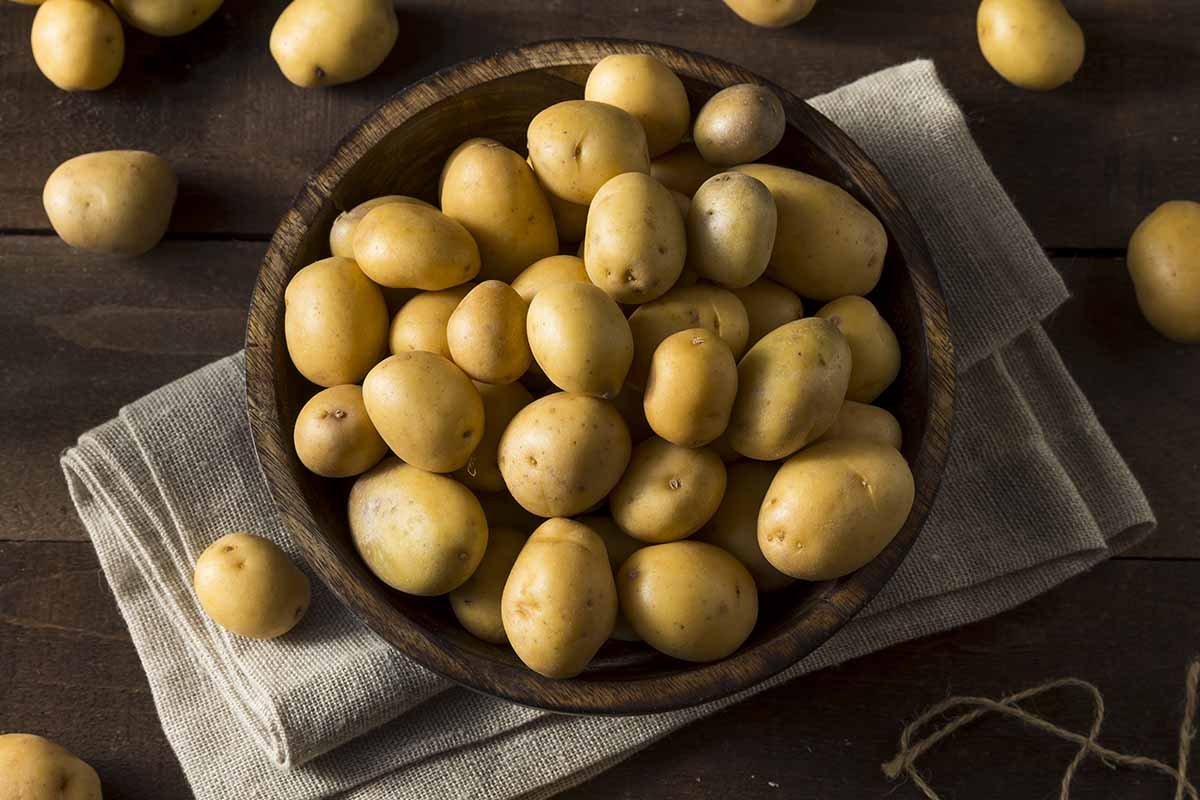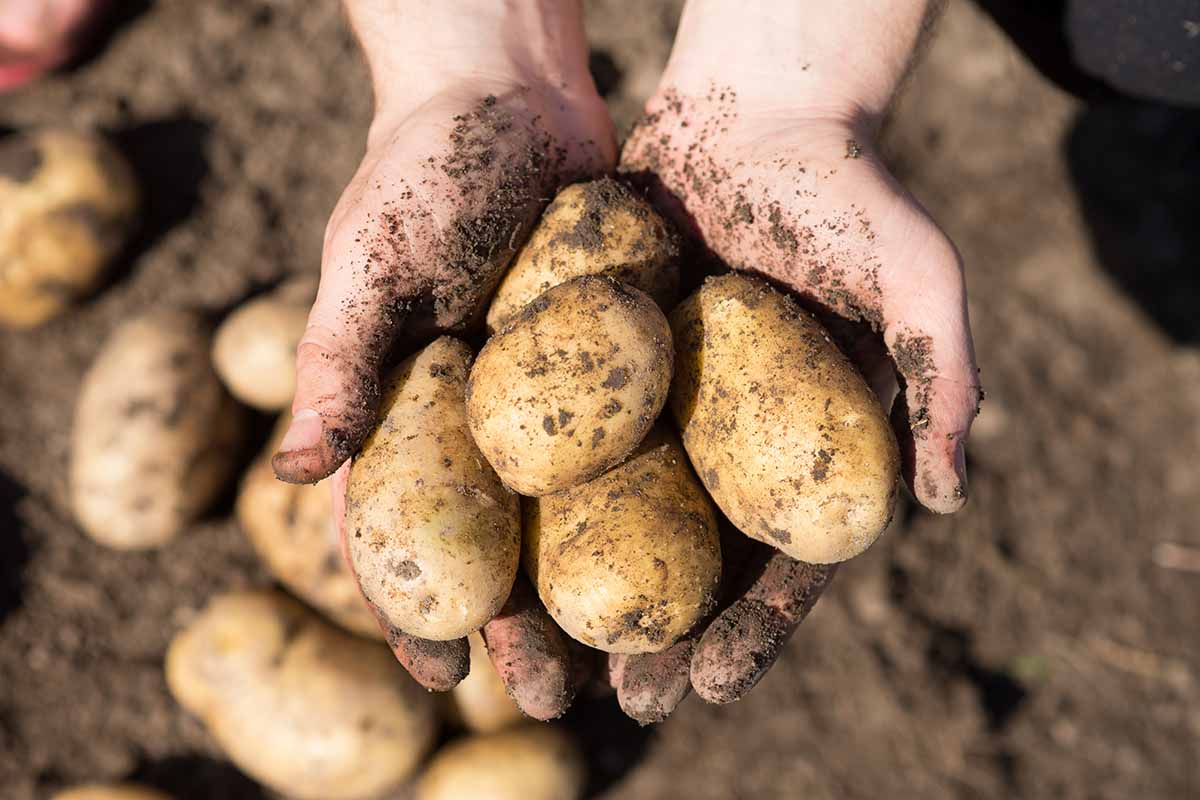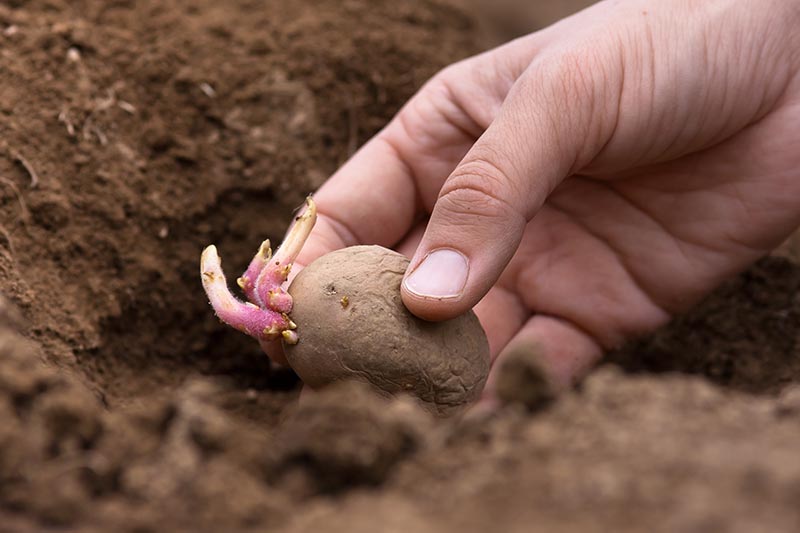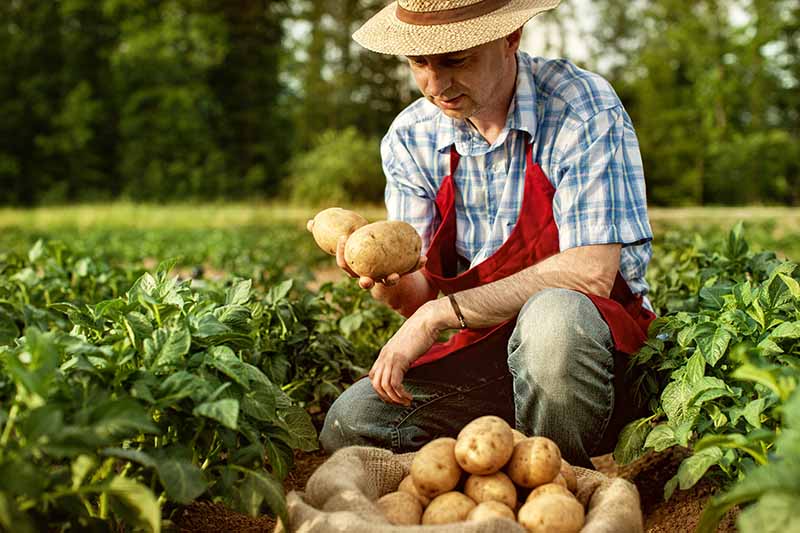There are maincrops, which are sometimes harvested as earlies. Or what about mid-season types that have thick, chewy skin? And how about new potatoes? What’s up with them? It’s enough to make you throw up your hands and head to the nearest fast-food drive-thru for the comfort of some french fries, right? We link to vendors to help you find relevant products. If you buy from one of our links, we may earn a commission. One nursery might call ‘German Butterballs’ a late-season type, for example, while another might group them as an early. Fortunately, there is a way to cut through the muck and figure out what’s what. That’s what this guide will help you do, and here’s what you can expect: Let’s clear up the confusion.
How Potatoes Are Categorized
There isn’t an official list of the types of potatoes and the seasonal categories that they fit into. For instance, a ‘German Butterball’ is technically a late-season variety. It can be grown, harvested, and stored like any other late type. But it’s also fantastic when grown as an early instead. To add to the confusion, different retailers will sometimes list the same variety as late, mid, or even early season. Rather than rely on the term “late” or “early,” just look at the time to maturity. That’s the defining characteristic you’re after. Then, you can decide at what point you want to harvest your spuds. Having said that, you can make certain assumptions about the various types. For instance, earlies are usually small and have thin skin. Consequently, they don’t store very long. Lates have thicker skin and are big (assuming you allow them to fully mature and don’t harvest early) and store for a good, long while. Mid-season types are somewhere in between. Not all tubers will fit these descriptions, though. For instance, most fingerlings are maincrop types but they’re small and have thinner skin than most late types. Don’t get hung up on the labels. While we’re clarifying our terms, don’t confuse earlies with new potatoes. Those are a whole different thing. New potatoes are defined by being harvested early to take advantage of their thinner skin and tender flesh. We’ll go over a few of the different cultivars that are available in the coming sections, but you might want to check out our guide to the ones that we recommend most highly as well.
Late Season
Late season types take about 120 days to reach maturity, though this can range between 110 and 160 days, depending on the cultivar. That means these tubers need a good, long time to mature.
Mid Season
These potatoes are ready to go in about 100 days, with a range between 95 and 110 days. This means they’re harvestable a bit sooner than late-season types. ‘German Butterball’ can be grown as a maincrop, but they’re fantastic if you harvest them early at about 85 days. ‘German Butterball’ At that point they have extremely tender flesh inside that practically melts like butter upon roasting. Nab ten of the tubers at Burpee. ‘Russett Burbank’ is a beloved heirloom that is stellar for baking. ‘Russett Burbank’ ‘Kennebec’ is another late-season potato but it is fantastic when you harvest it early at just 80 days. ‘Kennebec’ Grab ten tubers of this exceptionally popular cultivar at Burpee. Maincrops are the largest category, with a wide variety of options. Watch for ‘Butte,’ ‘Canela Russet,’ ‘Desiree,’ ‘Elba,’ ‘Katahdin,’ and ‘Lehigh.’ ‘French Fingerling,’ ‘Green Mountain,’ ‘Pink Fir Apple,’ ‘Reba,’ ‘Russian Blue,’ and ‘Snowden’ are all standouts as well. These strike a balance between the long storage capability of maincrop types and the tender flesh of the early varieties. They’re sometimes labeled as second earlies.
Early Season
Can’t wait to dig in? Early season types (aka first earlies) are ready in under 95 days. The downside is that they don’t store super well, so you need to use them up within a few weeks after harvest. The most famous of these is probably ‘Yukon Gold,’ which is ready in 100 days. ‘Yukon Gold’ They’re smaller than russets or butterballs, and have a thin skin with buttery flesh. Burpee carries packs of 10 tubers so you can add them to your potato pile. ‘Princess Larette’ ‘Princess Larette’ has nutty flesh and is ready in 90 to 110 days. Burpee also stocks packs of 10 of this tasty tuber. ‘All Blue,’ ‘Amarosa,’ ‘Red LaSoda,’ ‘Red Pontiac,’ and ‘Strawberry Paw,’ are also excellent choices.
When to Plant
Potatoes are a bit tricky to figure out when to plant. They often need a long time to grow but it needs to be cool out. Most cultivars can’t handle much heat, and temperatures around 70°F are ideal. ‘Masquerade’ is almost too pretty to eat. The skin is covered in wide purple stripes on a white base. But don’t feel bad digging in because they’re fantastic, with super moist flesh. As if that wasn’t enough to recommend ‘Masquerade’ already, this variety is ready in just two months. ‘Masquerade’ That’s not a typo. Perfect for the impatient potato lover, this cultivar is a Burpee exclusive and I can tell you from experience that you should nab yourself a 10-pack. ‘Rio Grande Russet’ ‘Rio Grande Russet’ is another classic choice. Each spud is about five inches long with brown skin and creamy white flesh. Grab ten tubers for your garden at Burpee. Also keep an eye out for ‘Bintje,’ ‘Caribe,’ ‘Irish Cobbler,’ and ‘Red Norland.’ That means you need to figure out how to balance the length of time you need to allow the plants to mature with the type of weather you typically have in your region. If you typically have a sweltering summer and a short spring, plant early and mid-season tubers a month before the last projected frost date in your area. Late types should go in the ground around August for a fall harvest. If you have hot summers but a nice, long spring, put the tubers in the ground a month before the last projected frost date. If you have cool summers, place any type of tubers in the ground two weeks before the last projected frost. Hopefully, now you have the knowledge to understand what growers mean when they label something as a maincrop, and you feel capable of choosing the right cultivar for your area and needs. Let us know what type you’re growing in the comments section below! If you’re interested in more information about information about growing potatoes, we have a few guides that might grab your eye:
The Ultimate Potato Growing GuideHow to Grow Potatoes in ContainersWhen and How to Harvest Homegrown Potatoes

